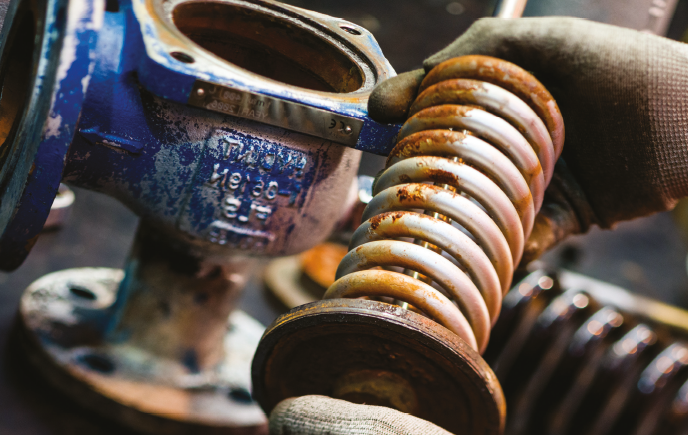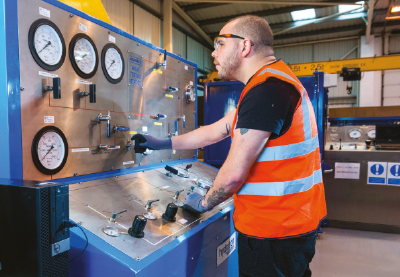Full steam ahead - Scottish distillery with Grundfos
There’s steam and there’s high-quality steam. There are pump solutions and intelligent pump solution...
In Silicon Valley they say "Fail early, fail fast, fail often." That may be okay when you're developing a new software app, but it won't wash with pressure equipment. Failure here can release compressed liquid, steam or other gases, can start a fire with escaping flammable liquids or gases, and can even cause a life- or property-threatening blast. So at ERIKS, we say "Test regularly, test correctly, don't fail at all."

Providing a safe workplace and safe work equipment are the employer’s responsibility. For pressure systems and equipment, the Pressure System Safety Regulations (2000) put the requirements down in writing. Systems must be inspected, tested and certified every 12-14 months, and failure to comply may be a criminal offence.
So for the safety of others and for your own legal protection, it’s worth knowing the risks, your obligations, and how best to meet them.
The likelihood of failure for pressure systems varies in line with a number of factors.
For example, the higher the system pressure, the greater the stresses on components and connections. The type of liquid or gas contained and their properties will also affect the level of risk. For example, a highly corrosive substance will introduce additional risks into the system.

Some of these risks will not be an issue if the equipment and pipework are suitable for the substances being handled. But if they’re not, that’s another potential cause of failure. Similarly, the equipment’s age and condition will have an influence on its performance and reliability, as will the complexity and control of its operation.
However, it is not just the equipment that matters. The skills and knowledge of the people who design, manufacture and install it all have a part to play in reducing the risk and the likelihood of failure.
Effective maintenance, testing and operation are all highly important in reducing risk. That’s why the Regulations demand a written scheme of examination; require inspection in accordance with this written scheme at the intervals it prescribes; and make it a criminal offence to operate a pressure system after expiry of the resulting certificate.

As an employer, you are under huge pressure to stay safe and legal with your pressure system. ERIKS Flow Control takes the pressure off, by testing and certifying two of the most crucial components of your pressure system: the Safety Relief Valve and Pressure Relief Valve.

To help your system remain safe and help you remain compliant, ERIKS Flow Control – operating from a purpose-built facility – can provide:

One of Silicone Valley's most successful entrepreneurs, Mark Zuckerberg, said that "The biggest risk is not taking any risk at all." But where you pressure systems are concerned, we think you'd be better listening to ERIKS than to Mark.
Pressure systems and equipment can be found across most industries and in many different applications. The Pressure System Safety Regulations (2000) are concerned with the uncontrolled release of stored energy in a pressure system, not with the hazardous nature of any product within the system. Examples of systems and equipment covered by the Regulations are:
Get the latest updates from ERIKS including:
Choose any or all of these via the ERIKS Subscription Centre!
Our Know+How brings together the best of the latest Know+How Hub articles in one easy to digest magazine, covering the following topics:
That's why its the leading magazine for maintenance engineers from ERIKS.
Want Know+How Magazine delivered direct to your door? Visit the ERIKS Subscription Centre to opt-in!
Take a look at our latest updates...
There’s steam and there’s high-quality steam. There are pump solutions and intelligent pump solution...
Looking for a custom Product quote? Need an answer to a Technical question? Looking for Careers/HR support? Want to work with us? Interested in our Digital Trading solutions? Have a finance question? Send us your enquiry and a member of the ERIKS team will be with you quickly.
We strive to deliver exceptional quality service and products. As part of this goal, we encourage customers to submit feedback on their experiences so we can resolve any issues and concerns.
At ERIKS we strive to deliver the best quality service and products. As part of this goal we encourage customers to submit feedback on their experiences so we can resolve any issues and concerns.
Call us: +441215086000
